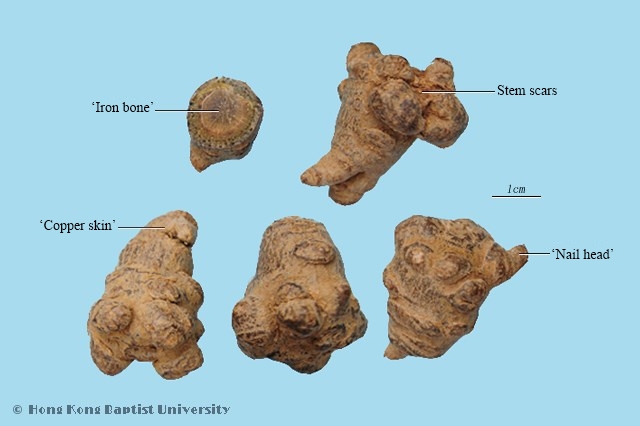Production RegionsPrimarily produced in the Chinese provinces of Wenshan of Yunnan, Guangxi, Jiangxi, Sichuan.
Macroscopic FeaturesRoot is sub-conical or cylindrical, 1~6cm lone, 1~4cm diameter. Externally grayish-yellow or grayish-brown, with intermittent longitudinal wrinkles and lateral root scars. Apex has stem scar, surrounding with verruca. Heavy in weight, firm texture, fractured surface is grayish-green, yellowish-green or grayish-white, cortex and xylem are relatively easily split apart, xylem is slightly radial arranged. faint odor, bitter with a sweet aftertaste.
Quality RequirementsSuperior medicinal material has round head, large and full size, dry body, heavy weight, firm texture, grayish-black fractured surface, without cracks.
PropertiesSweet, slightly bitter, warm.
FunctionsStops bleeding, disperses blood, calms pain. Apply to swelling and pain from injury, chest impediment and pain, abdominal mass, blood stasis and amenorrhea, dysmenorrheal, postpartum yin stasis and abdominal pain, sore and abscess swelling pain.
Technical Terms‘Copper skin’: This refers to a grayish-yellow color seen on the outer skin of san qi, which is similar to the color of copper. ‘Iron bone’: This refers to the central, inner core of the medicinal material, which is iron-colored and hard like bone. It is heavy and solid and does not break easily. ‘Nail head’: This refers to the numerous scars of lateral roots that from small protuberances on the upper portion of the medicinal material; they are also called ‘breasts (ru bao)’.
OriginThe dried root and rhizome of Panax notoginseng (Burk.) F. H.Chen.(Araliaceae)
